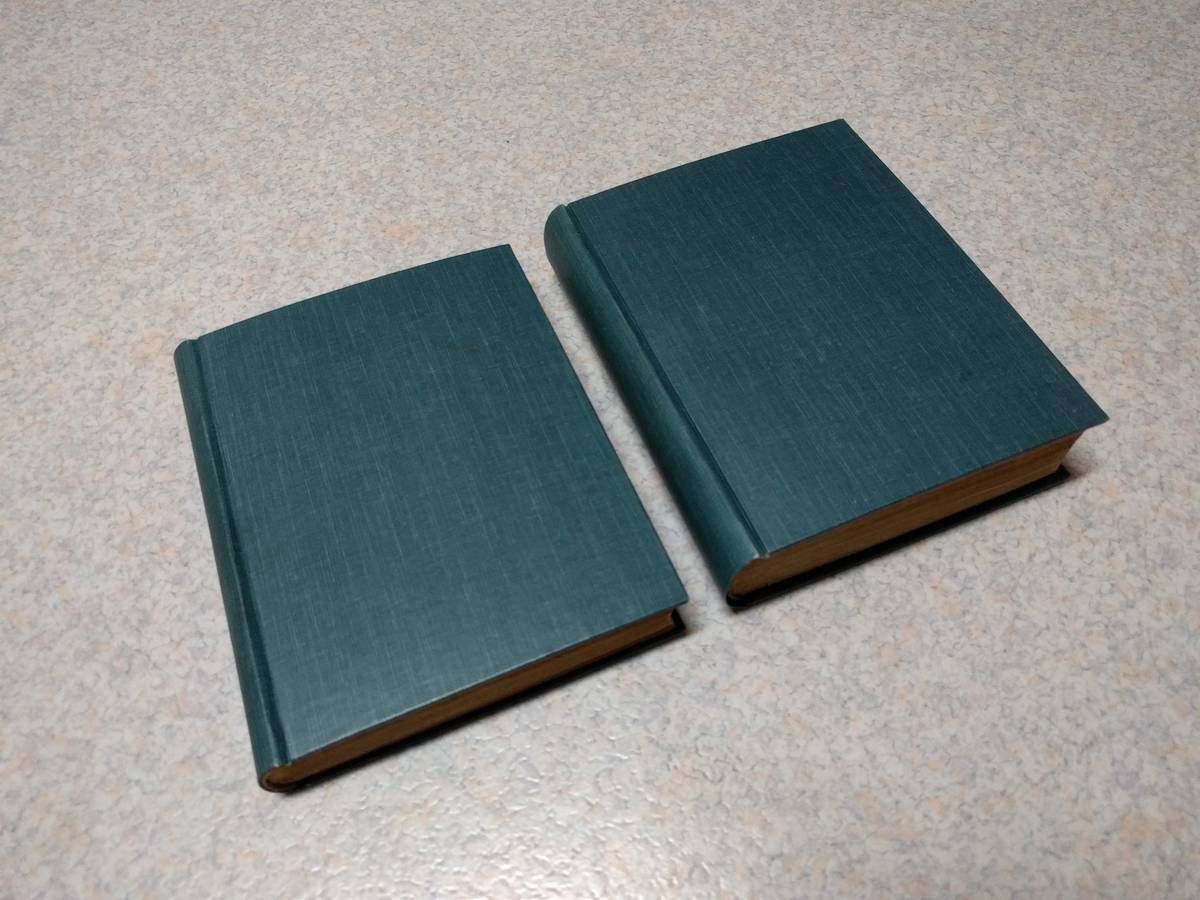VAILLANT,J.
Numismata Imperatorum Romanorum praestantiora a Julio Caesar ad Postumum et Tyrannos. Per Joannem Vaillant Bellovacum, Doct. Med. & Seren. Ducis Cenomanensium Antiquarium. Tomus primus: De Romanis aeris, seu Senatus consulto percussis. Editio tertia emendatior & plurimis rarissimis nummis auctior. Cui accessit Series numismatum Maximi Moduli nondum observata. Tomus secundus: De aureis et argenteis. Editio tertia plurimis rarissimis Regum & Urbium nummis ut & maximis & quinariis auctior. Cui accessere eorum omnium interpretationes.
Paris (Lutetiae Parisiorum), Apud Joannem Jombert, 1694.
4to. 2 volumes: (XVI),256,(18 index); (VIII),397,(43 index) p. Early 20th century cloth. 20.5 (
Ref: cf ISBN 304573108 (which has the impressum 'Amstelodami, apud G. Gallet, 1694'; cf. Ebert 23241; Graesse 6/2,234'; Brunet 5,1027) (
Details: 2 frontispieces, the same, designed and engraved by the Amsterdam printmaker Adriaen Schoonebeek (1661-1705); it depicts an emperor on a pedestal, with his right foot on the globe; at his feet sit some chained asian and germanic enemies; right of him the goddess Athena, who offers him a jar(?); at the foot of the pedestal rests the river god Tibur together with the shewolf and the famous twins. Titles printed in red and black. Many engraved coins (head & tails) of bronze, silver and gold Roman coins) (
Condition: Small
stamp on the verso of the frontispieces. Paper slightly yellowing, the frontispieces are browned. The inner margin of the first gathering partly strengthened with a strip of brown paper) (
Note: The French numismatist Jean Vaillant, also known as Jean Foy-Vaillant, was born in 1632 in Beauvais (Bellovacorum civitas). The name Foy is of his father Jean Foy, and, adopted by his uncle Clément Vaillant, the young man took his name too. He died in 1706. Jean Vaillant studied law and medicin. When at Rome he befriended Francesco Cameli, antiquary to queen Christina of Sweden, who initiated him into numismatics. Noted for his erudition, Jean Vaillant made several trips at the expense of Louis XIV to visit major collections in Italy, Sicily, Greece, Egypt, Persia, Holland and England, and he brought to Paris valuable numismatic collections which contributed to the expansion of the numismatic Cabinet of King Louis XIV, a 'thesaurum universis antiquae historiae studiosis'. (p. *2 verso) In France he was appointed antiquary (antiquarius) to the Medal Cabinet of the Duke of Maine (Cenomanensis ager = Maine), Louis Auguste I de Bourbon, bastard son of Louis XIV and Madame de Montespan; he was chosen in 1684 by Louvois, a minister of Louis XIV, to produce a catalogue of the 'Cabinet des medailles du roi'. From his vast knowledge of coins, he wrote a number of books, including studies of Ptolemaic, Parthian and Seleucid coins.
§ The first edition of his first work, the 'Numismata Imperatorum Romanorum', a study on Roman coins dating from Julius Caesar to the reign of the Usurpator Marcus Cassianus Postumus, and the time of the so-called soldier emperors (the 'Tyranni' on the title) in the mid-third century, was published in Paris in 1674) (
Provenance: On the verso of the frontispiece 'H. Brunsting 1924 5/XI'. This is the Dutch classical scholar and archaeologist Hendrik Brunsting, 1902-1997, who bought this book at the age of 22. His doctoral thesis is: 'Het grafveld onder Hees bij Nijmegen; een bijdrage tot de kennis van Ulpia Noviomagus' (1937). From 1938 till 1946 he was assistant at the Biological-Archaeological Institute in Groningen and from 1946 till 1967 curator at the 'Rijksmuseum van Oudheden te Leiden' (National Museum of Antiquities in Leiden). From 1956 till 1977 he was professor of Archeology and Prehistory at the Free University (Vrije Universiteit) in Amsterdam. He was primarily active in Nijmegen as a researcher. During his time in Groningen, he carried out excavations of residential sites near Wachtum, a burial mound near Eext, and he excavated a burial mound and an urn field near Eldersloo, and a burial mound near Anloo. He wrote a study on the history of burial mound research, 'Het grafheuvelonderzoek', published in: 'Een kwart eeuw oudheidkundig bodemonderzoek in Nederland', in 'Gedenkboek A.E. van Giffen', (edited by H.E. van Gelder and others), Meppel 1947, p. 223/53) (
Collation: a-4, e4, A-2K4, *4, 2*1. *4 (leaf *4, frontispiece, bound before leaf *1), A-3I4, (minus blank leaf 3I4)) (Photographs on request)
Book number: 152758 Euro 170.00
Keywords: (Oude Druk), (Rare Books), French imprints, Münzen, Numismatik, Roman art and archaeology, Roman history, alte Geschichte, ancient history, antike altertum antiquity, coins, numismatics, römische Geschichte, römische Kunst und Archäologie
 VAILLANT,J.
VAILLANT,J.